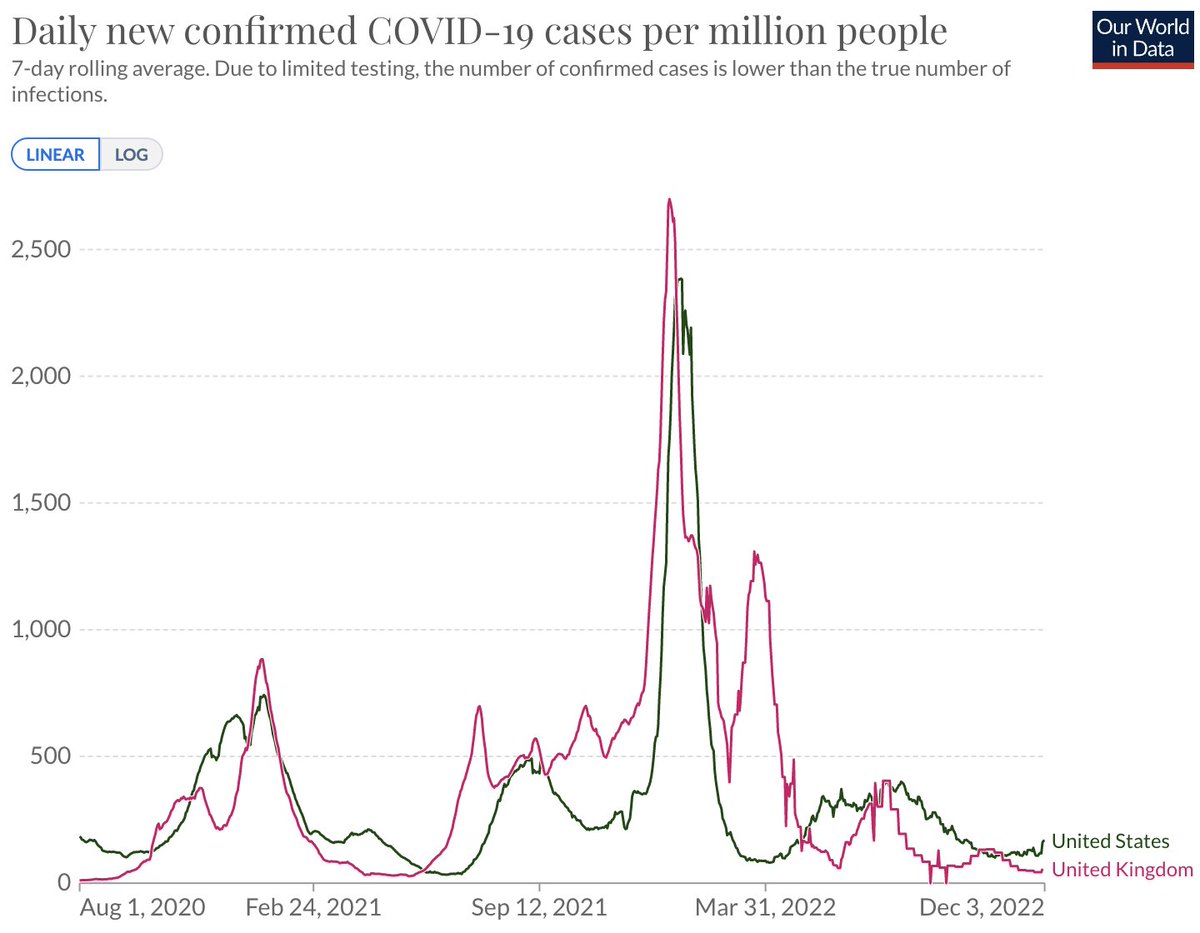Following up here with speculative estimates of the rate of spread of Omicron and a stab at how to apportion this rapid rate of spread between intrinsic transmissibility and immune escape. 1/18
Monday's post was mainly meant to emphasize that observed rapid spread of Omicron can be influenced by both intrinsic transmissibility and immune escape. Here, I'll try to put (speculative) numbers on this rate of spread. 2/18
https://twitter.com/trvrb/status/1465364300936085506
Key datapoints include rapid displacement of existing Delta viruses by Omicron in Gauteng and South Africa. Estimates of logistic growth rate here by @TWenseleers imply Omicron has ~5X current transmission rate of Delta. 3/18

https://twitter.com/TWenseleers/status/1465100337631608832

But as stated previously, I believe this estimate is likely to drop somewhat as more data comes in. But I wouldn't be surprised if this drops to something still significant, say 3X or 4X the transmission rate of Delta in South Africa. 4/18
https://twitter.com/trvrb/status/1465364321303597061
In addition to changes in relative frequency, we can look at what's happening with case counts, which have been rising rapidly in Gauteng and South Africa. We can measure the exponential growth in cases via Rt (the number of secondary cases caused by an index case). 5/18
In work from @lrossouw we get a rapid rise in Rt in Gauteng from ~0.8 to ~2.5 over the course of Nov corresponding to the take off of Omicron (unsupervised.online/static/covid-1…). 6/18 

Work from @seabbs and colleagues gives a similar result of Rt increasing from ~0.8 to above 2 over the course of November in Gauteng (epiforecasts.io/covid/posts/su…). 7/18 

I've revised my own phylodynamic estimates of rate of spread with a couple improvements. First off, I'm now using 206 Omicron genomes generously shared by researchers through @GISAID. 8/18
https://twitter.com/trvrb/status/1464353254267965440
Secondly, I'm now masking spike which has issues of spurious within-Omicron diversity due to amplicon dropout during sequencing. I've adjusted molecular clock rate from 8×10^-4 to 5.5×10^-4 to compensate (determined from sequences taken over the course of the pandemic). 9/18
This updated analysis gives a median estimate of the common ancestor to Omicron viruses of Sep 30 with a 95% credible interval of between Sep 9 and Oct 13. 10/18 

This also gives a median estimate of doubling time of 4.9 days, which we can convert to an estimate of Rt assuming a generation interval of 5.1 days (eurosurveillance.org/content/10.280…). Doing so gives a median estimate of Rt of 2.0 with a 95% credible interval of 1.6 to 2.6. 11/18 

Having two very different methods give Rt estimates of between 2.0 and 2.5 gives me some (small) degree of confidence. We can triangulate relative fitness with Rt so that Delta in South Africa is at Rt of ~0.8 and Omicron is at about three times this with Rt of ~2.5. 12/18
We can then use the approach here to factor possible scenarios of intrinsic transmission vs immune escape that would give Omicron Rt of 2.5. 13/18
https://twitter.com/trvrb/status/1465364313980354560
Under a scenario of 90% population immunity against previous variants, we get the following picture where Omicron could lie anywhere along the dashed line ranging from an intrinsic R0 of 3 and 83% immune escape to an intrinsic R0 of 9 and 20% immune escape. 14/18 

Note the these estimates are sensitive to assumed population immunity. Under a scenario of 85% population immunity, we get the following picture instead that shifts the required level of immune escape upwards for a particular R0 value. 15/18 

Again, based on wildly divergent spike protein, I'm guessing that immune escape will be substantial and so I still suspect that it's quite possible that Omicron will show lower intrinsic transmissibility than Delta. My updated diagram. 16/18 

Note also that high immune escape, lower intrinsic transmissibility is not necessarily a good thing. Higher immune escape places previously infected and vaccinated individuals more at risk. 17/18
We'll know much more about this level of risk in ~2 weeks when we get neutralization results. I'm particularly interested in neutralization titers of individuals with two doses of vaccine vs individuals with three doses of vaccine. 18/18
• • •
Missing some Tweet in this thread? You can try to
force a refresh












